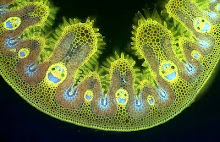Monday, July 16, 2012
Monk'shood, Aconitum napellus, Ranunculaceae
"Helmet-fluore, or the great Monkes-hood, beareth very faire and goodly blew floures in a shape like a helmet; which are so beautifull, that a man would think they were of some excellent vertue, but non est semper fides habenda fronti " wrote John Gerard in his herbal of 1597. And, indeed, appearances are not always to be trusted, because Gerard then went on to describe the dire consequences of eating this poisonous member of the buttercup family. "The force and facultie of Wolfs-bane [another common name for members of the monk'shood genus] is deadly to man and all kindes of beasts .......The symptoms that do follow those that doe eat of these deadly herbs are these; their lips and tongue swell forthwith, their eyes hang out, their thighes are stiffe, and their wits are taken from them."
But as long as you don't eat it, this is a fine plant for the herbaceous border, with the flowers of a violet-blue hue that's shared by wild columbine, another member of the same plant family.
Gerard noted that the plant was also found in alpine meadows "where you shall find the grasse that growth round it eaten by cattell, but no part of the herb it selfe touched, except by certain flies, who in such abundant measure swarme about the same that they cover the whole plant". He then describes how a confection made from twenty of these flies that are immune to monk'shood's poison was an "excellent remedy not only against the Aconites, but all other poisons whatsoever".
Looking at the rather sinister flowers from the side, it's easy to see where the names helmet-flower and monk'shood came from.
The nectaries of the flower are located way up inside the upper petal that forms the hood, where only long-tongued bees can reach it.
The flower is dependent on bumblebees for pollination and the strong bilateral symmetry of the flower means that they have to force their way in through this narrow opening, where they brush against the stamens and stigma as they struggle to reach the nectaries in the hood. The stamens ripen before the stigmas (protandry) and in this picture you can see a couple whose anthers have burst, shed their pollen and whose stamen filaments have elongated. There are six more whose anthers have burst to release white pollen but whose stamen filaments haven't elongated, but the majority of the numerous anthers present have yet to release their pollen.
I've posted some photos of bumblebees visiting the flowers here.
Labels:
Aconitum napellus,
Monk'shood,
Ranunculaceae
















